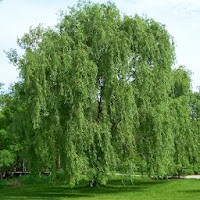Once upon a time, aspirin...
ACETYLSALICYLIC ACID
T
|
here is no internal medicine without ASA, a famous Haitian internist
once told . From the mid 70s up to now, ASA has become so
popular that in many households today there exists even some ASA pills
carefully kept in safe place. Why
do so many people use ASA even at small dose on a daily basis?
 |
| Salix Alba told to be charged with Salicylic acid |
 |
| ASA Chemical Structure |
To get started in our journey through ASA world, listen first to what WIKIPEDIA wrote as an introduction:
Acetylsalicylic Acid
was originally derived from Salicin the active ingredient in Willow bark. In
certain parts of the world Willow bark had been used for centuries in folk
medicine. In 1897 Felix Hoffmann, an employee of Fredich Bayer, first prepared
aspirin which is now the active ingredient in over 60 over-the-counter
medicines. Sometimes the name Bayer is used for this compound owing to their
manufacturers name.
This drug is used
today to lower fevers and reduce inflammation, especially those caused by
rhumatic fever and arthritis.
It will thin the
blood and therefore it will, in small doses prevent heart attack, stroke &
unstable angina. Because of its ability to thin the blood Acetylsalicylic Acid will
inhibit the formation of blood clots.
It`s most common use
is to relieve headaches as well as muscle & joint pain. Acetylsalicylic
Acid interferes with the bodys synthesis of specific POSTAGLANDINS. These
compounds are produced by almost every tissue in the body and control the
substances involved in the transmission of nerve impulses which participate in
the body`s defences against infection. Postaglandins have been shown to bring
on fever and play a major role in inflammation.
At present other
uses of this drug are under investigation such as there usefulness in
prevention of certain cancers and dangerously high blood pressure which
sometimes can occur in pregnancy. It`s effectiveness in the relief of migraines
is currently being looked into.
Remember the words: prostaglandins, blood clots
Formal Chemical Name
(IUPAC)
Update by Karl
Harrison
No comments:
Post a Comment